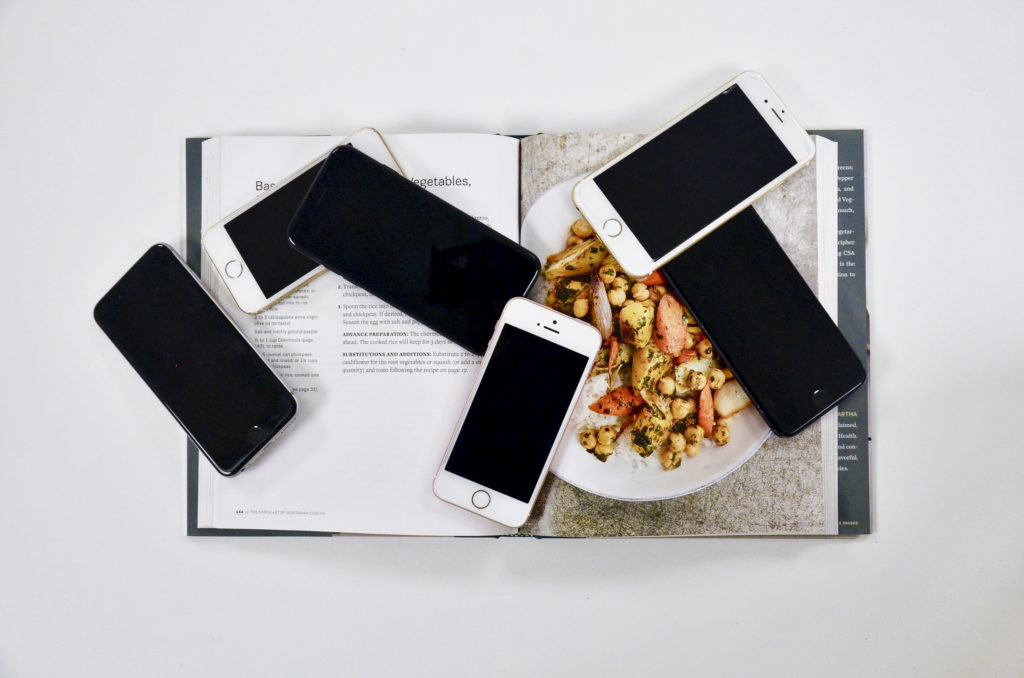From Paper to Screen

Originally published in our spring 2018 issue: See Food
By Maria Murad
Photo by Maria Murad
Imagine this: Paula Dean’s buttery hands flipping back and forth from the selfie to the main camera, attempting to get the perfect aerial view of her butter-filled cherry cobbler, topped with butter streusel glazed in butter with a side of whipped butter. Once her fingers finally manage to capture this fat-infused masterpiece, she has to decide what filter to choose. This modern-day dilemma is the result of a social media age that is taking over the way we see food.
The ten second Snapchat recipes we watch today are vastly different from the cookbooks our grandparents scoured in the hopes of finding the perfect menu for family dinner. The way we are seeing, learning about, and cooking food is changing as our digital age eradicates hard copy recipes. Too often during lectures I’ve noticed students with multiple tabs open: notes, readings, and Tastemade–a site with short, minute-or-less cooking demonstrations. This shift in culinary sharing makes food more accessible to social-media users worldwide. At the same time, it changes the way chefs create recipes to be shared online to receive more publicity.
Numerous restaurants use Instagram and Facebook to advertise their dishes in #foodporn fashion, but what about the chefs who are sharing their recipes online? More people are turning to their laptops and phone screens to watch cooking shows. People have neither the time nor the patience to sit through a thirty-minute cooking show spoon feeding them step-by-step instructions on how to make family dinner. Now we can get the same meal shown to us in under a minute.
The proliferation of phones in society has its pros and cons, but in this context, it’s important to note how much more accessible recipe sharing and food inspiration are. It’s easier now to share across the globe. Different food cultures, ideas, fusions, and trends can spread from one corner to the other with ease. Anyone with Snapchat can pull out their phone and learn how to bake gluten-free pizza, a three-tiered cake, or a bruschetta, all with little to no effort. High-quality food is no longer unattainable.
With this newfound accessibility comes a need for chefs to adapt to today’s new system of garnering a fanbase in order to make money. Tastemade, Tiny Kitchen, and BuzzFeed Food (sped-up, how-to cooking videos on various social media platforms) all entrance us with their quick concoctions. To make these videos, chefs must take upscale, complicated recipes and compress them into under a minute. As a result, seemingly intimidating dishes like macaroons and baked Alaskas don’t seem so bad after all.
Although Paula Dean may struggle with the anti-butter nature of the selfie cam, our new social media age of food allows the culinary arts to break boundaries and reach audiences it never could in the cookbook era. You know what this means: more butter recipes!